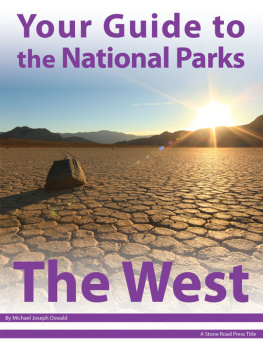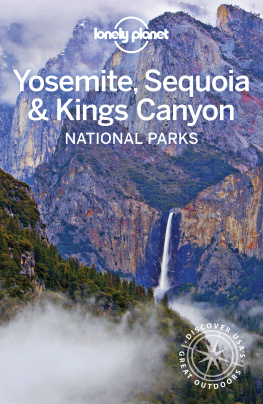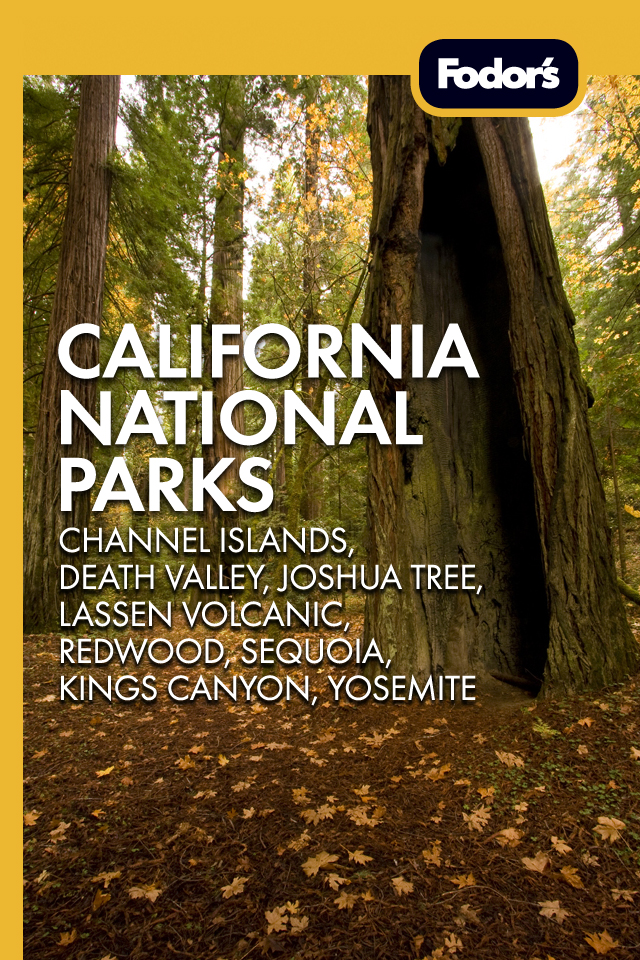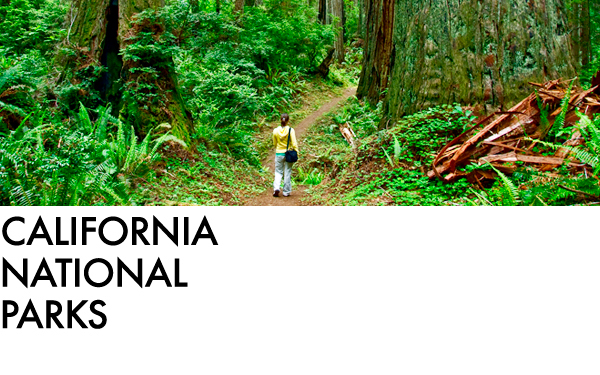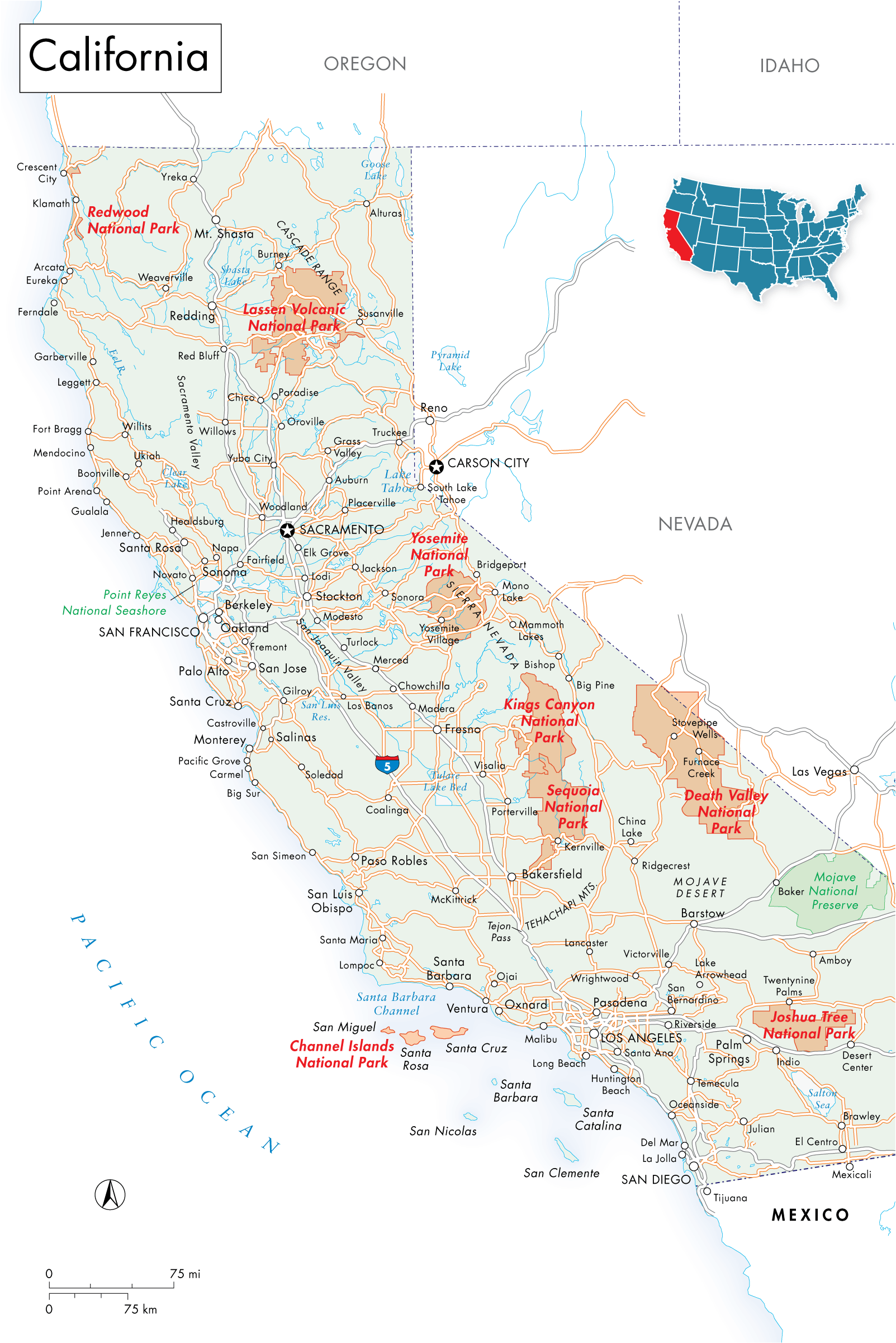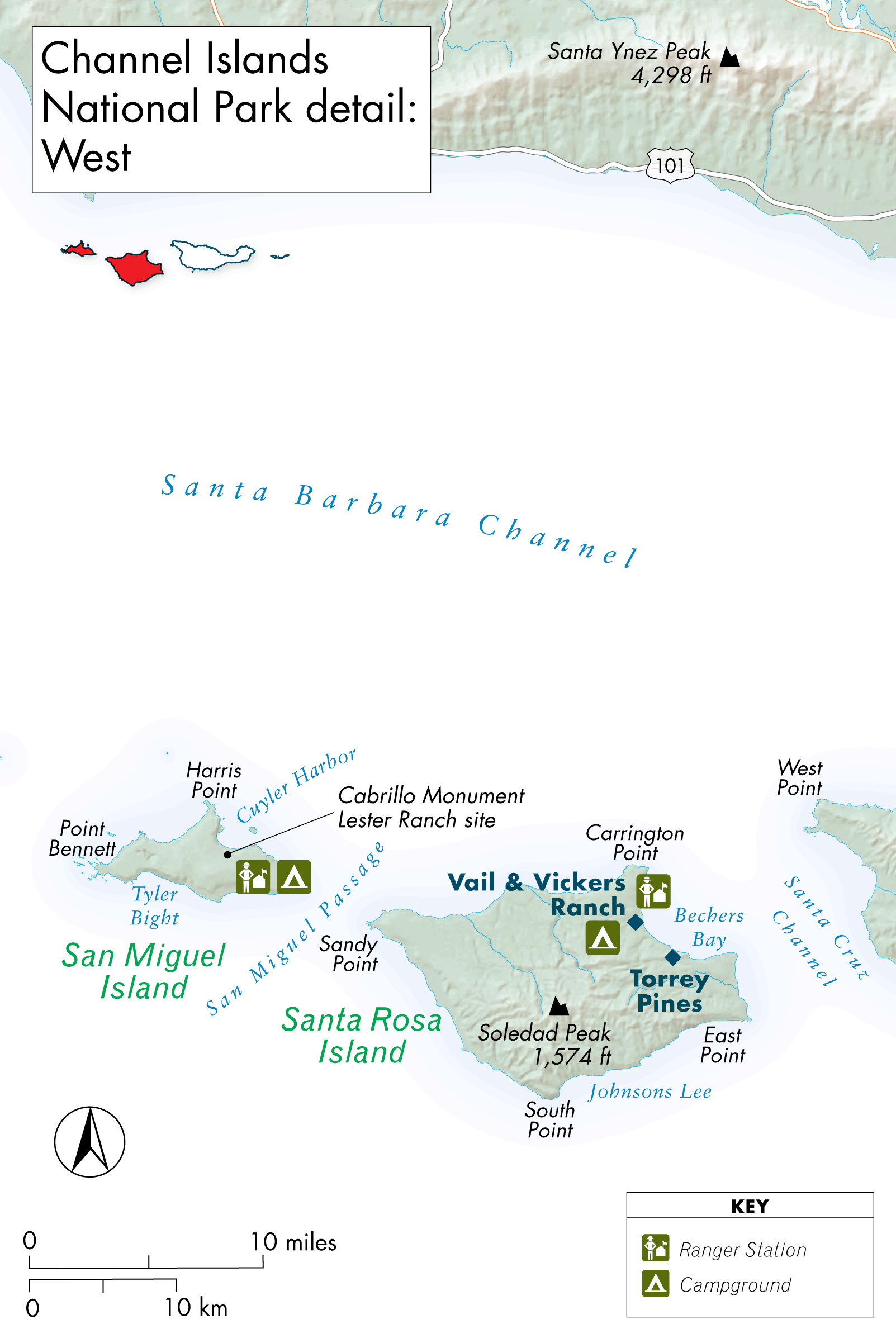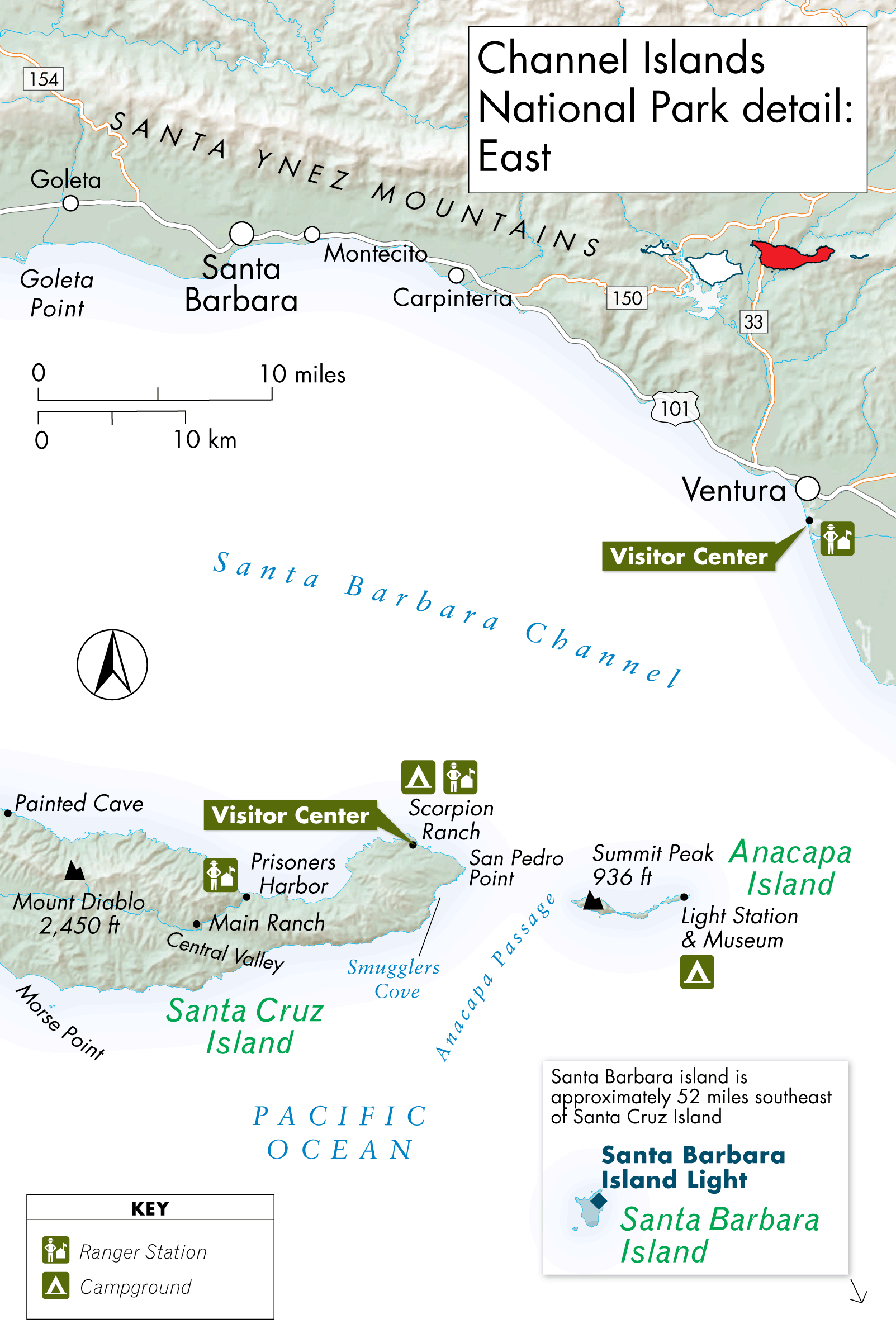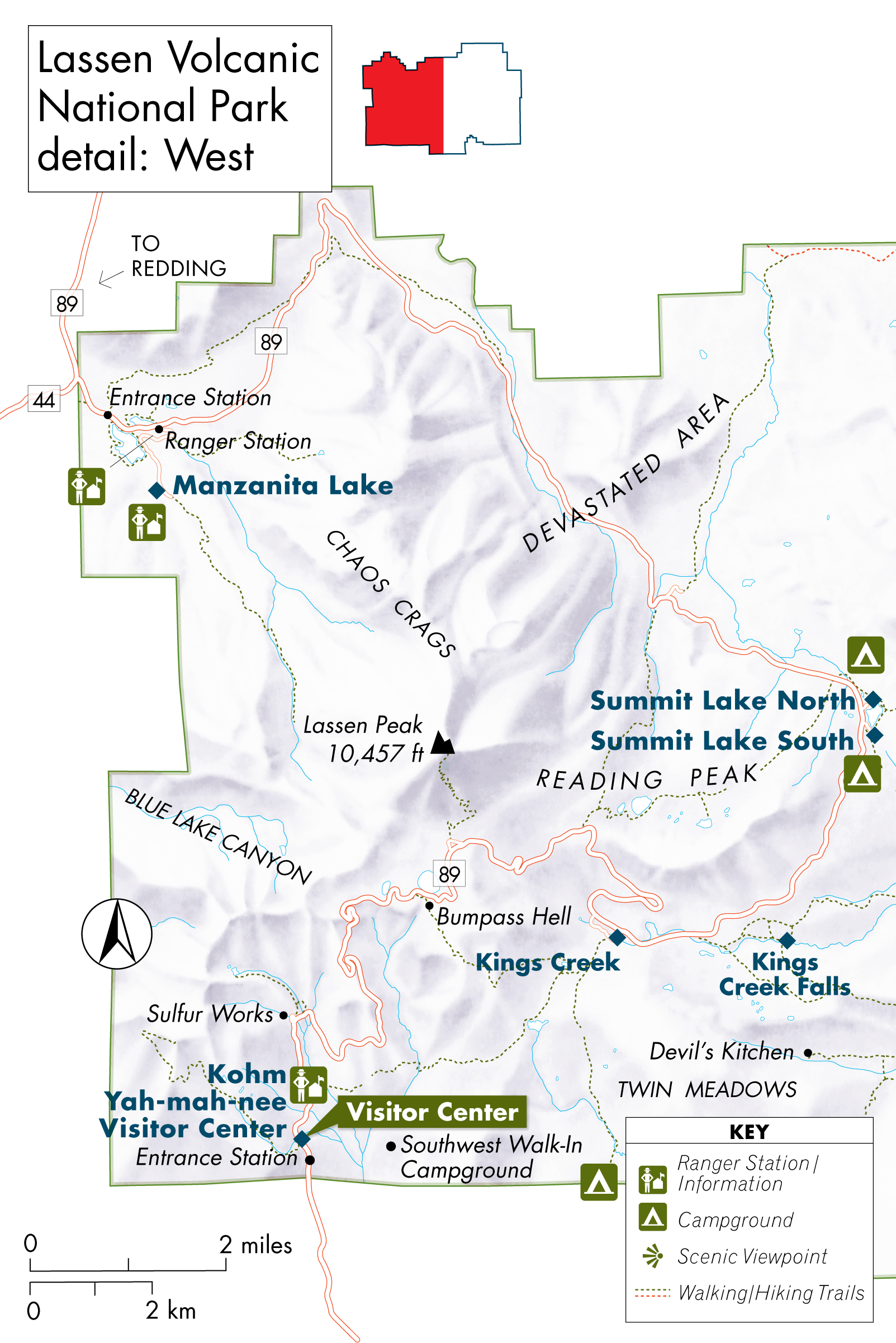Although just 60 mi northwest of Los Angeles, the Channel Islands are worlds away from the urban sprawl and tangled freeways on the mainland, making this five-island, 250,000-acre park the ultimate destination for nature lovers aiming to get away from it all. The park is accessible by boat from harbors in Ventura and Oxnard (about an hour north of L.A.) and Santa Barbara (about 1 hours north of L.A.); trips take from 45 minutes to three hours plus.
Known for: Pristine land- and seascapes with an exceptional variety of marine and terrestrial plants and animals145 species here are found nowhere else on the planet.
Accessibility: You must take boat or plane to reach the islands.
Why kids like it: They get to see lots of California critters, like dolphins, sea lions, whales, eagles, and pelicans.
What hikers say: You can trek into blissfully uncrowded and serene wilderness areaswith miles of trails and spectacular views from nearly every vantage point.
Romantics: The mountains that dot this park off the coast of California are often obscured by mists, and animals found nowhere else on earth add to the parks otherworldly feel. The Pacific Ocean is the main attraction here: play on its beaches, ply its waters on a kayak, or tour it by boat as you enjoy an island escape for twoalbeit one totally different than a typical Caribbean trip.
DEATH VALLEY
Location: Southeastern California, Southwestern Nevada
Known for: Breathtaking vistas, blasting 120-degree heat, mysterious moving rocks.
Biggest crowds: Late fall through early spring
Accessibility: Youll need a vehicle to get around the vast park; 4X4s are required on some backcountry roads.
Why kids like it: The park has a Star Wars feel to itwhich makes sense, since this was the location for the films Tatooine (Luke Skywalkers home planet) scenes. Nighttime desert walks often include kangaroo rats and kit fox.
What hikers say: The Titus and Fall Canyons offer spectacular narrows, washes, and dryfall (a rock chute that becomes a waterfall during thunderstorms). Just dont venture out into this park without adequate clothing, sun protection, food, and watereven in the winter. The desert is very unforgiving.
The largest national park in the contiguous United States and the lowest point in the Western hemisphere, 3.4 million-acre Death Valley is a vast, lonely, beautiful place. This desert landscape is surrounded by majestic mountains, dry lake beds, and other geological wonders. From Furnace Creek Visitors Center, Baker is about 113 mi to the southeast, Las Vegas is about 141 mi to the east, and Los Angeles is roughly 294 mi to the southwest.
BEST FOR
Getting a Taste of the Wild West: Death Valley is not the most hospitable placeat least during certain times of the yearbut the climate isnt as horrible as the parks reputation would suggest. Still, the name and the location have long epitomized the very idea of the desert in American literature, film, and television.
Desert Solitaire: With its inhospitable environment and forbidding name, Death Valley has come to epitomize the desert of the American Southwest. It attracts only one million visitors a year, mainly outside the scorching summer monthsbut even in the high season, the parks vast 3.4 million acres of space guarantee peace and solitude.
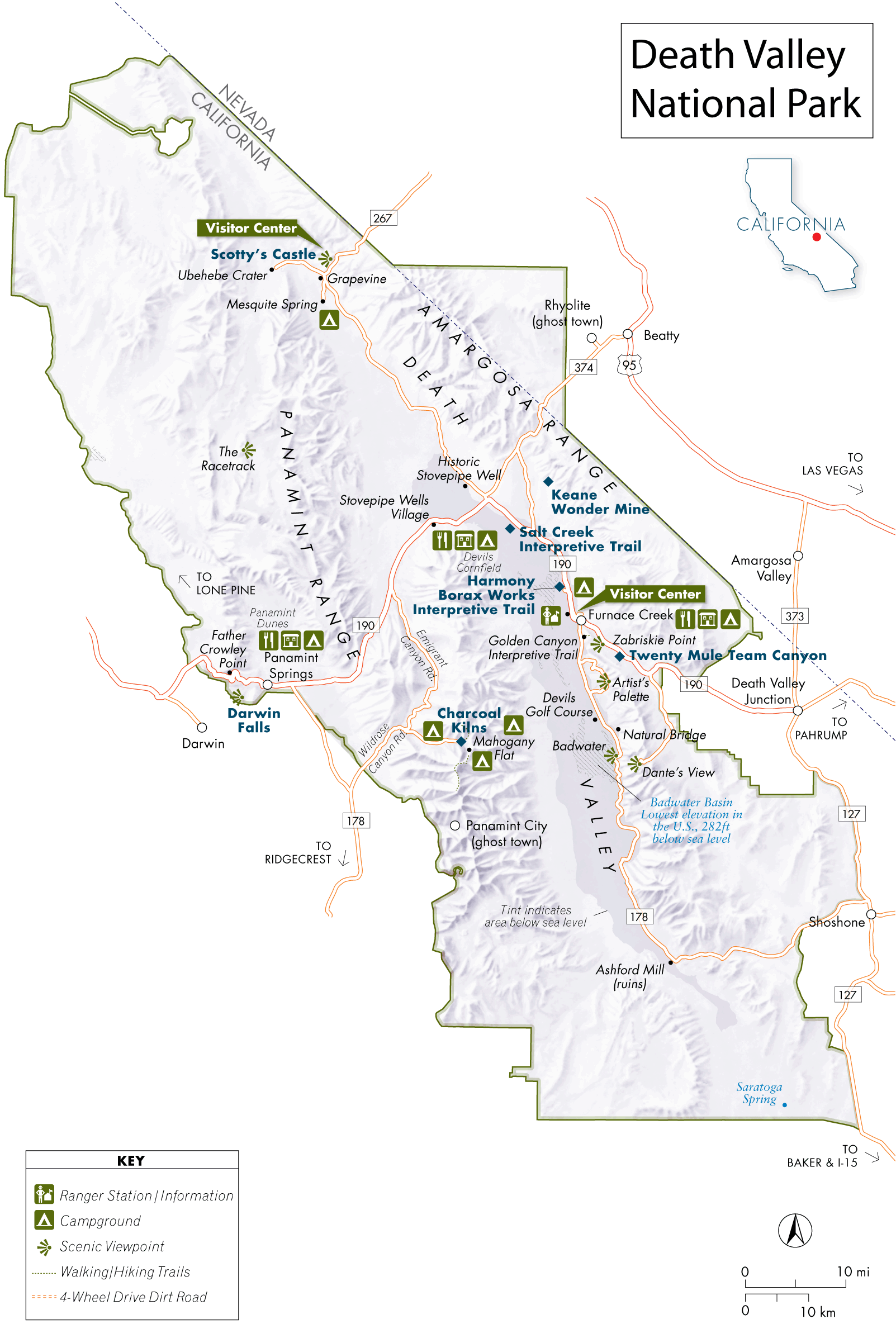
JOSHUA TREE
Location: South-central California
The 794,000-acre park attracts more than a million visitors a year, who come to enjoy brilliant wildflower displays and starry nights. It lies 140 mi east of Los Angeles, 175 mi northeast of San Diego, and 215 mi southwest of Las Vegas.
Known for: World-class rock climbing, desert scenery.
Biggest crowds: October through May
Accessibility: Much of the park can be seen from the roads.
Why kids like it: Giant piles of rocks are great places to play hide-and-seekand encounter some strange critters. The parks eponymous Joshua treestwisted and prickly, with clumps of spiny leavesare straight out of a Dr. Seuss book.
What hikers say: Great views lurk around almost every bend.
BEST FOR
Day Trippers: A quick two- or three-hour drive east from the urban sprawl of Los Angeles brings you to the junction of the Mojave and Colorado deserts. Joshua Tree National Park, named for extensive stands of the gnarled tree, is home to one of the finest wildflower displays in Southern California each spring.
Desert Solitaire: This south-central California park is prime hiking, rock climbing, and exploring country, where you can have a close-up encounter with coyotes, desert pack rats, golden eagles, rattlers, and exotic plants like the creamy white yucca, crimson-tipped ocotillo, and spiny cholla cactus.
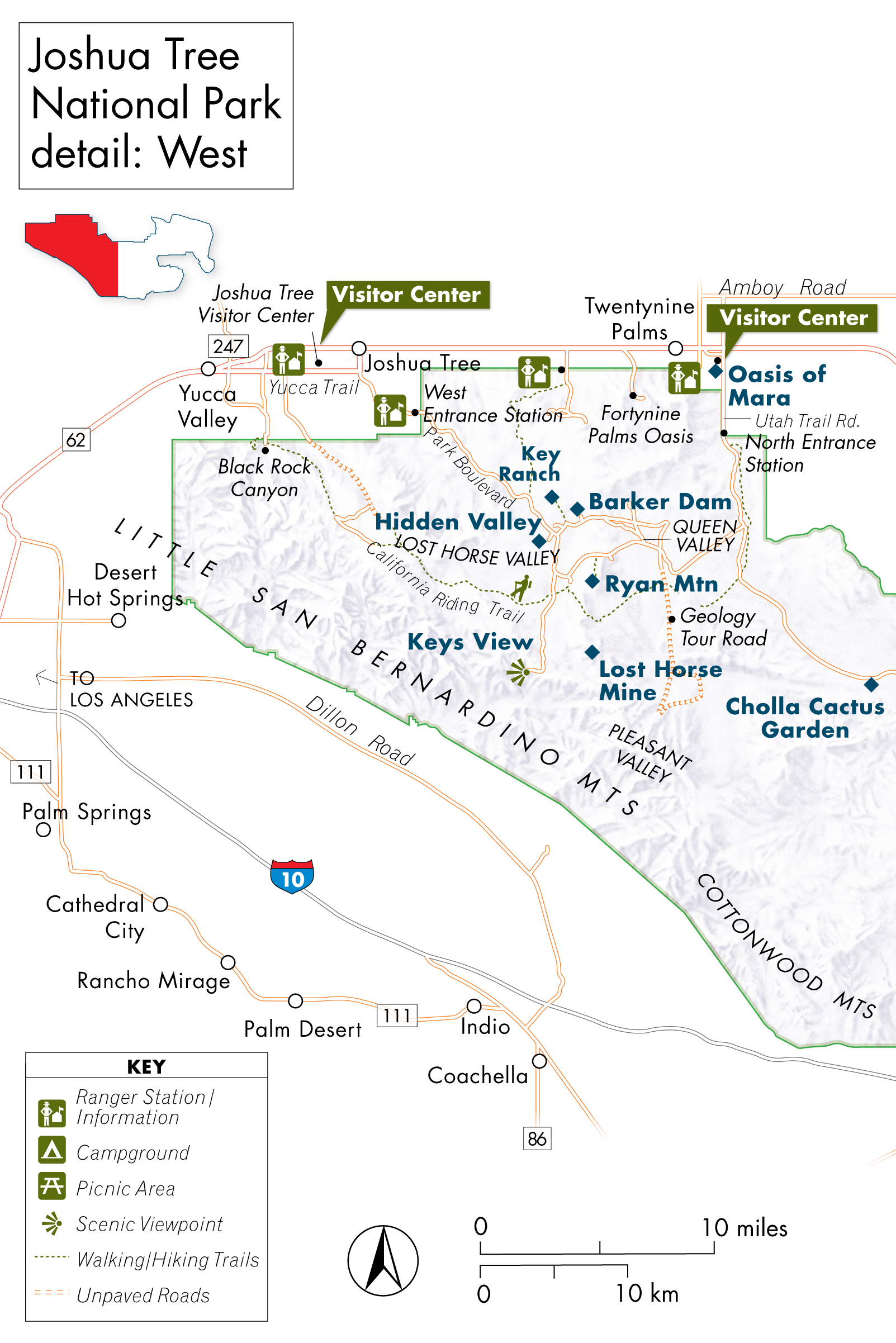
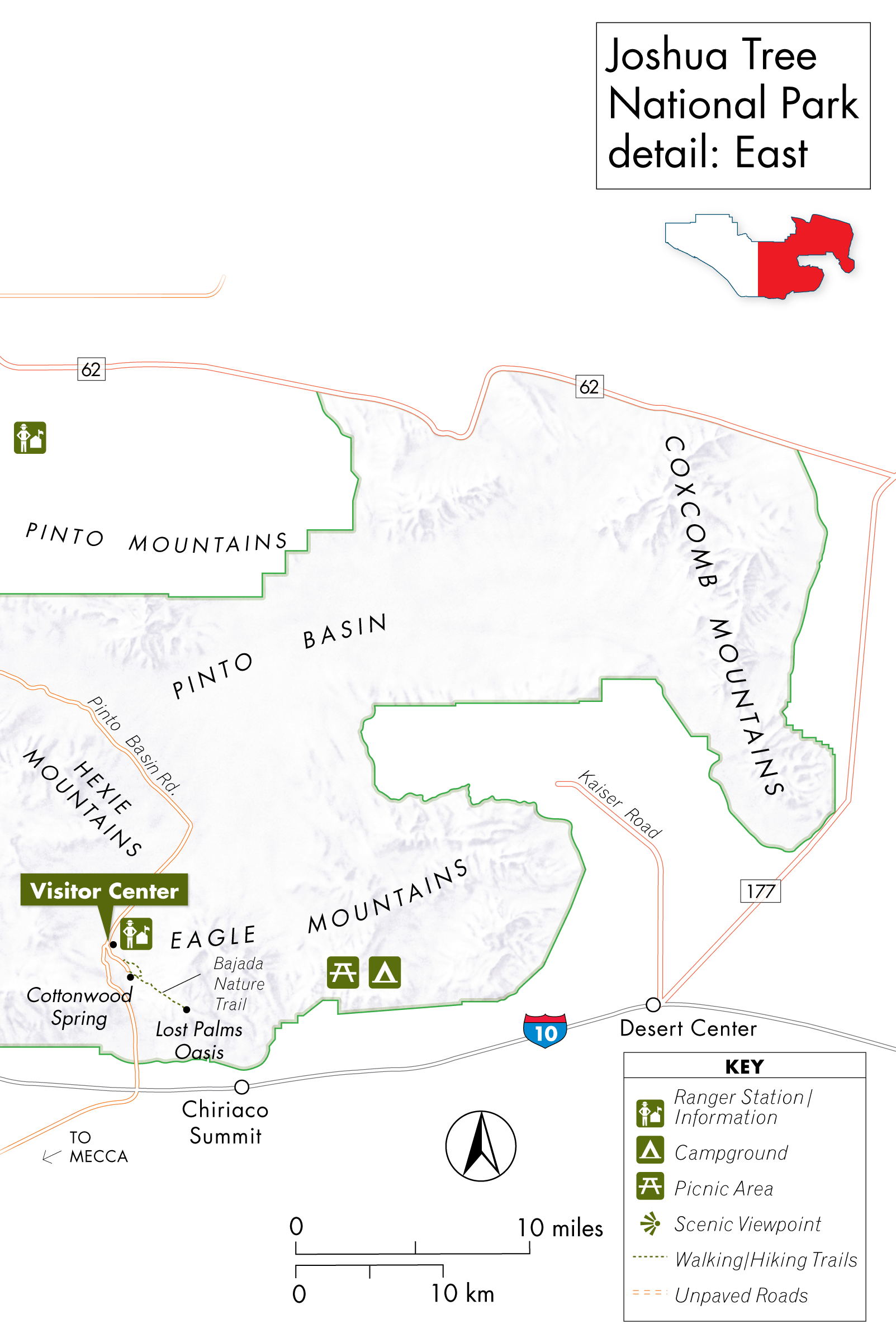
LASSEN VOLCANIC
Location: NortheasternCalifornia
Known for: Mt. Lassen, a dormant volcanothat last erupted in 1915plus every other type of known volcano, roiling mud pots, andhissing steam vents.
Biggest crowds: Mid-July throughmid-September
Accessibility: You can take in stunningviews of many of the park's geological features from the road. Mellow hiking trails leadto waterfalls and meadows.
Why kids like it: Anything thatsimultaneously belches and emits a sulphury rotten egg smell is very, verycool.
What hikers say: Whether you hike Mt.Lassen on a clear day or scale it with a guide under a full moon, the experience isunforgettable.
About 250 mi northeast of San Francisco, Lassen Volcanic has 106,000acres of spectacular geologic wonders plus more than 150 mi of hiking trails,countless mountain lakes and streams, and canyon overlooks, plus wildlife andwildflowers galore.
BEST FOR
Fun and Funky Activities: Though dormant since 1921, activity around volcanic Lassen Peak makes itclear that there's still a lot going on beneath the ground. Fumaroles, mud pots, andbubbling hot springs dot the landscape. It's a fun and sometimes smelly place toexplore; but beware of the scalding water.


